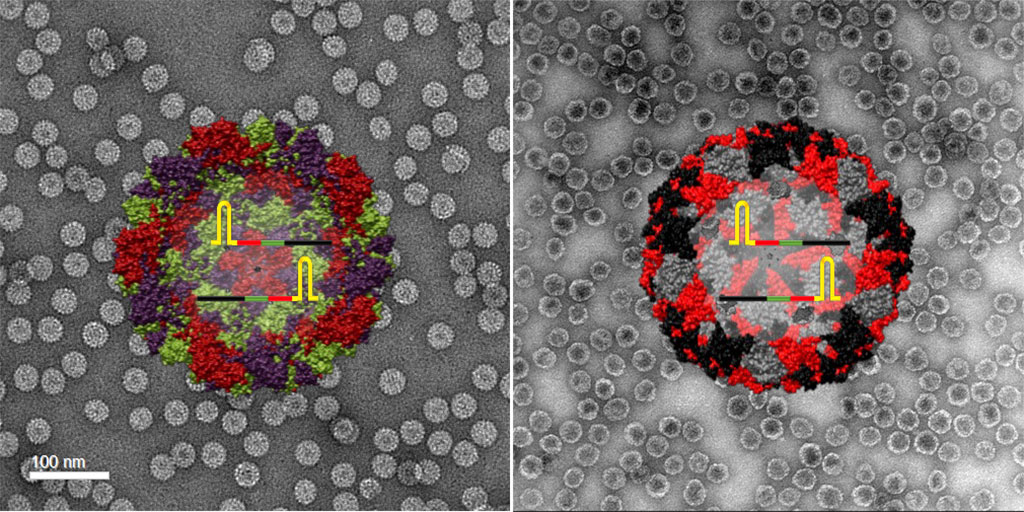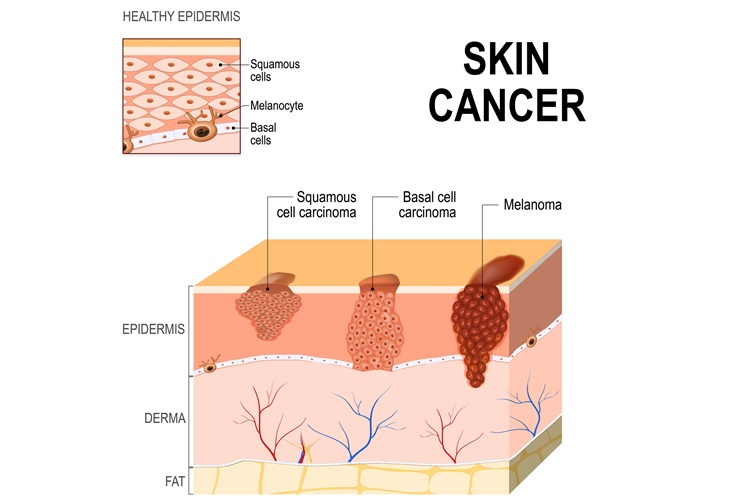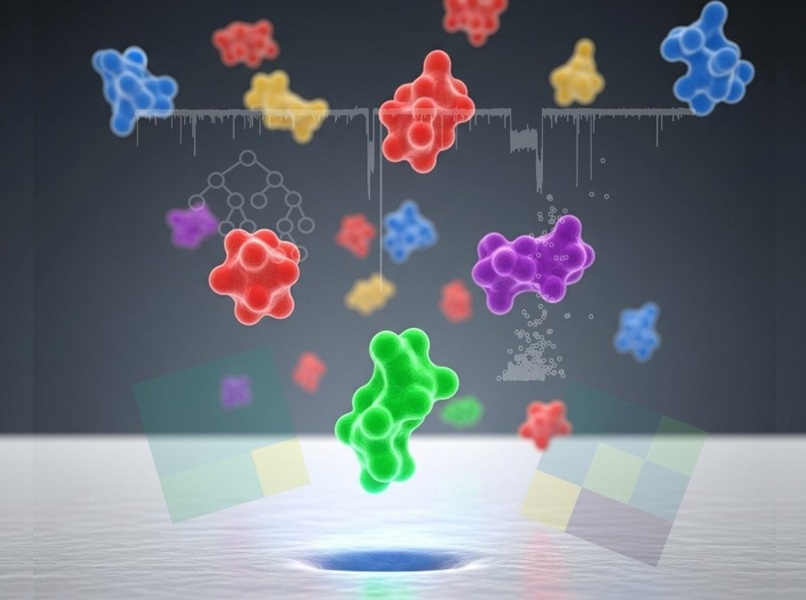Virus-Like Probes Could Help Make Rapid COVID-19 Testing More Accurate and Reliable
|
By LabMedica International staff writers Posted on 02 Dec 2020 |

Image: Illustration and TEM image of SARS-CoV-2 positive control made from plant virus-based nanoparticles (left) and bacteriophage nanoparticles (right) (Photo courtesy of Soo Khim Chan/ACS Nano)
A team of nanoengineers has developed new and improved probes, known as positive controls, that could make it easier to validate rapid, point-of-care diagnostic tests for COVID-19 across the globe.
The positive controls, made from virus-like particles by nanoengineers at the University of California San Diego (La Jolla, CA, USA), are stable and easy to manufacture. Researchers say the controls have the potential to improve the accuracy of new COVID-19 tests that are simpler, faster and cheaper, making it possible to expand testing outside the lab.
Positive controls are a staple in the lab - they are used to verify that a test or experiment indeed works. The positive controls that are primarily used to validate today’s COVID-19 tests are naked synthetic RNAs, plasmids or RNA samples from infected patients. But the issue is RNA and plasmids are not stable like viral particles. They can degrade easily and require refrigeration, making them inconvenient and costly to ship around the world or store for long periods of time.
By packaging segments of RNA from the SARS-CoV-2 virus into virus-like particles, the researchers have shown that they can create positive controls for COVID-19 tests that are stable - they can be stored for a week at temperatures up to 40 C (104 F), and retain 70% of their activity even after one month of storage - and can pass detection as the novel coronavirus without being infectious. The team developed two different controls: one made from plant virus nanoparticles, the other from bacteriophage nanoparticles. The controls are run and analyzed right alongside a patient sample, providing a reliable benchmark for what a positive test result should look like.
To make the plant virus-based controls, the researchers use the cowpea chlorotic mottle virus, which infects black-eyed pea plants. They essentially open the virus, remove its RNA contents, replace them with a synthesized RNA template containing specific sequences from the SARS-CoV-2 virus, then close everything back up. The process to make the bacteriophage-based controls starts with plasmids, which are rings of DNA. Inserted into these plasmids are the gene sequences of interest from the SARS-CoV-2 virus, as well as genes coding for surface proteins of the bacteriophage Qbeta. These plasmids are then taken up by bacteria. This process reprograms the bacteria to produce virus-like particles with SARS-CoV-2 RNA sequences on the inside and Qbeta bacteriophage proteins on the outside.
Both controls were validated with clinical samples. A big advantage, the researchers point out, is that unlike the positive controls used today, these can be used in all steps of a COVID-19 test. So far, the researchers have adapted their controls for use in the CDC-authorized RT-PCR test. While this is currently the gold standard for COVID-19 testing, it is expensive, complex, and can take days to return results due to the logistics of sending samples off to a lab with PCR capability. The researchers are now working on adapting the controls for use in less complex diagnostic tests like the RT-LAMP test that can be done on the spot, out of the lab and provide results right away.
“Our goal is to make an impact not necessarily in the hospital, where you have state-of-the-art facilities, but in low-resource, underserved areas that may not have the sophisticated infrastructure or trained personnel,” said Nicole Steinmetz, a professor of nanoengineering at the UC San Diego Jacobs School of Engineering. “It’s a relatively simple nanotechnology approach to make low-tech assays more accurate. This could help break down some of the barriers to mass testing of underserved populations in the U.S. and across the world.”
Related Links:
University of California San Diego
The positive controls, made from virus-like particles by nanoengineers at the University of California San Diego (La Jolla, CA, USA), are stable and easy to manufacture. Researchers say the controls have the potential to improve the accuracy of new COVID-19 tests that are simpler, faster and cheaper, making it possible to expand testing outside the lab.
Positive controls are a staple in the lab - they are used to verify that a test or experiment indeed works. The positive controls that are primarily used to validate today’s COVID-19 tests are naked synthetic RNAs, plasmids or RNA samples from infected patients. But the issue is RNA and plasmids are not stable like viral particles. They can degrade easily and require refrigeration, making them inconvenient and costly to ship around the world or store for long periods of time.
By packaging segments of RNA from the SARS-CoV-2 virus into virus-like particles, the researchers have shown that they can create positive controls for COVID-19 tests that are stable - they can be stored for a week at temperatures up to 40 C (104 F), and retain 70% of their activity even after one month of storage - and can pass detection as the novel coronavirus without being infectious. The team developed two different controls: one made from plant virus nanoparticles, the other from bacteriophage nanoparticles. The controls are run and analyzed right alongside a patient sample, providing a reliable benchmark for what a positive test result should look like.
To make the plant virus-based controls, the researchers use the cowpea chlorotic mottle virus, which infects black-eyed pea plants. They essentially open the virus, remove its RNA contents, replace them with a synthesized RNA template containing specific sequences from the SARS-CoV-2 virus, then close everything back up. The process to make the bacteriophage-based controls starts with plasmids, which are rings of DNA. Inserted into these plasmids are the gene sequences of interest from the SARS-CoV-2 virus, as well as genes coding for surface proteins of the bacteriophage Qbeta. These plasmids are then taken up by bacteria. This process reprograms the bacteria to produce virus-like particles with SARS-CoV-2 RNA sequences on the inside and Qbeta bacteriophage proteins on the outside.
Both controls were validated with clinical samples. A big advantage, the researchers point out, is that unlike the positive controls used today, these can be used in all steps of a COVID-19 test. So far, the researchers have adapted their controls for use in the CDC-authorized RT-PCR test. While this is currently the gold standard for COVID-19 testing, it is expensive, complex, and can take days to return results due to the logistics of sending samples off to a lab with PCR capability. The researchers are now working on adapting the controls for use in less complex diagnostic tests like the RT-LAMP test that can be done on the spot, out of the lab and provide results right away.
“Our goal is to make an impact not necessarily in the hospital, where you have state-of-the-art facilities, but in low-resource, underserved areas that may not have the sophisticated infrastructure or trained personnel,” said Nicole Steinmetz, a professor of nanoengineering at the UC San Diego Jacobs School of Engineering. “It’s a relatively simple nanotechnology approach to make low-tech assays more accurate. This could help break down some of the barriers to mass testing of underserved populations in the U.S. and across the world.”
Related Links:
University of California San Diego
Latest COVID-19 News
- New Immunosensor Paves Way to Rapid POC Testing for COVID-19 and Emerging Infectious Diseases
- Long COVID Etiologies Found in Acute Infection Blood Samples
- Novel Device Detects COVID-19 Antibodies in Five Minutes
- CRISPR-Powered COVID-19 Test Detects SARS-CoV-2 in 30 Minutes Using Gene Scissors
- Gut Microbiome Dysbiosis Linked to COVID-19
- Novel SARS CoV-2 Rapid Antigen Test Validated for Diagnostic Accuracy
- New COVID + Flu + R.S.V. Test to Help Prepare for `Tripledemic`
- AI Takes Guesswork Out Of Lateral Flow Testing
- Fastest Ever SARS-CoV-2 Antigen Test Designed for Non-Invasive COVID-19 Testing in Any Setting
- Rapid Antigen Tests Detect Omicron, Delta SARS-CoV-2 Variants
- Health Care Professionals Showed Increased Interest in POC Technologies During Pandemic, Finds Study
- Set Up Reserve Lab Capacity Now for Faster Response to Next Pandemic, Say Researchers
- Blood Test Performed During Initial Infection Predicts Long COVID Risk
- Low-Cost COVID-19 Testing Platform Combines Sensitivity of PCR and Speed of Antigen Tests
- Finger-Prick Blood Test Identifies Immunity to COVID-19
- Quick Test Kit Determines Immunity Against COVID-19 and Its Variants
Channels
Clinical Chemistry
view channel
VOCs Show Promise for Early Multi-Cancer Detection
Early cancer detection is critical to improving survival rates, but most current screening methods focus on individual cancer types and often involve invasive procedures. This makes it difficult to identify... Read more
Portable Raman Spectroscopy Offers Cost-Effective Kidney Disease Diagnosis at POC
Kidney disease is typically diagnosed through blood or urine tests, often when patients present with symptoms such as blood in urine, shortness of breath, or weight loss. While these tests are common,... Read moreMolecular Diagnostics
view channel
Urine Test Detects Early Stage Pancreatic Cancer
Pancreatic cancer remains among the hardest cancers to detect early. In the UK, around 10,000 people are diagnosed each year, but only 5% survive beyond five years. Late diagnosis is a major factor—more... Read more
Genomic Test Could Reduce Lymph Node Biopsy Surgery in Melanoma Patients
Accurately determining whether melanoma has spread to the lymph nodes is crucial for guiding treatment decisions, yet the standard procedure—sentinel lymph node biopsy—remains invasive, costly, and unnecessary... Read moreHematology
view channel
ADLM’s New Coagulation Testing Guidance to Improve Care for Patients on Blood Thinners
Direct oral anticoagulants (DOACs) are one of the most common types of blood thinners. Patients take them to prevent a host of complications that could arise from blood clotting, including stroke, deep... Read more
Viscoelastic Testing Could Improve Treatment of Maternal Hemorrhage
Postpartum hemorrhage, severe bleeding after childbirth, remains one of the leading causes of maternal mortality worldwide, yet many of these deaths are preventable. Standard care can be hindered by delays... Read more
Pioneering Model Measures Radiation Exposure in Blood for Precise Cancer Treatments
Scientists have long focused on protecting organs near tumors during radiotherapy, but blood — a vital, circulating tissue — has largely been excluded from dose calculations. Each blood cell passing through... Read moreImmunology
view channel
Blood-Based Liquid Biopsy Model Analyzes Immunotherapy Effectiveness
Immunotherapy has revolutionized cancer care by harnessing the immune system to fight tumors, yet predicting who will benefit remains a major challenge. Many patients undergo costly and taxing treatment... Read more
Signature Genes Predict T-Cell Expansion in Cancer Immunotherapy
Modern cancer immunotherapies rely on the ability of CD8⁺ T cells to rapidly multiply within tumors, generating the immune force needed to eliminate cancer cells. However, the biological triggers behind... Read moreMicrobiology
view channel
Fast Noninvasive Bedside Test Uses Sugar Fingerprint to Detect Fungal Infections
Candida bloodstream infections are a growing global health threat, causing an estimated 6 million cases and 3.8 million deaths annually. Hospitals are particularly vulnerable, as weakened patients after... Read more
Rapid Sepsis Diagnostic Device to Enable Personalized Critical Care for ICU Patients
Sepsis is a life-threatening condition that occurs when the body’s response to infection spirals out of control, damaging organs and leading to critical illness. Patients often arrive at intensive care... Read morePathology
view channel
New Molecular Analysis Tool to Improve Disease Diagnosis
Accurately distinguishing between similar biomolecules such as proteins is vital for biomedical research and diagnostics, yet existing analytical tools often fail to detect subtle structural or compositional... Read more
Tears Offer Noninvasive Alternative for Diagnosing Neurodegenerative Diseases
Diagnosing and monitoring eye and neurodegenerative diseases often requires invasive procedures to access ocular fluids. Ocular fluids like aqueous humor and vitreous humor contain valuable molecular information... Read moreTechnology
view channel
Cell-Sorting Device Uses Electromagnetic Levitation to Precisely Direct Cell Movement
Sorting different cell types—such as cancerous versus healthy or live versus dead cells—is a critical task in biology and medicine. However, conventional methods often require labeling, chemical exposure,... Read more
Embedded GPU Platform Enables Rapid Blood Profiling for POC Diagnostics
Blood tests remain a cornerstone of medical diagnostics, but traditional imaging and analysis methods can be slow, costly, and reliant on dyes or contrast agents. Now, scientists have developed a real-time,... Read moreIndustry
view channel
Qiagen Acquires Single-Cell Omics Firm Parse Biosciences
QIAGEN (Venlo, Netherlands) has entered into a definitive agreement to fully acquire Parse Biosciences (Seattle, WA, USA), a provider of scalable, instrument-free solutions for single-cell research.... Read more
Puritan Medical Products Showcasing Innovation at AMP2025 in Boston
Puritan Medical Products (Guilford, ME, USA), the world’s most trusted manufacturer of swabs and specimen collection devices, is set to exhibit at AMP2025 in Boston, Massachusetts, from November 11–15.... Read more
Advanced Instruments Merged Under Nova Biomedical Name
Advanced Instruments (Norwood, MA, USA) and Nova Biomedical (Waltham, MA, USA) are now officially doing business under a single, unified brand. This transformation is expected to deliver greater value... Read more









 (3) (1).png)














